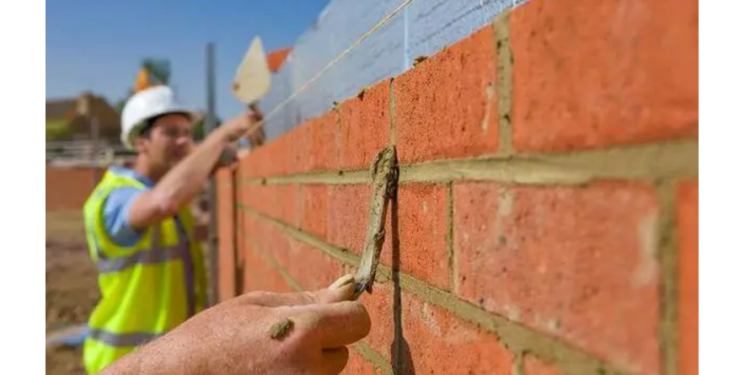Brick pointing NYC, also known as tuckpointing or repointing, is a crucial technique used to restore and maintain the integrity of brick structures. In a city like New York, where historical buildings abound, brick pointing NYC plays a significant role in preserving their architectural beauty and structural stability. If you’re a proud owner of a historic property in NYC or simply fascinated by its rich architectural heritage, understanding the importance of brick pointing is essential.
The Significance of Brick Pointing NYC
As time takes its toll, the mortar joints between bricks in a building can deteriorate due to various factors such as weathering, water damage, or simply old age. When the mortar weakens, it can compromise the overall stability of the structure, leading to potential structural issues and water penetration. Brick pointing NYC is a meticulous process that involves removing and replacing damaged or deteriorated mortar, ensuring the structural integrity of the building.
Benefits of Brick Pointing NYC
Properly executed brick pointing in NYC offers numerous benefits, both in terms of structural integrity and aesthetics. Let’s explore some of the key advantages:
- Enhanced Structural Stability: Brick pointing strengthens the overall structure by restoring the mortar joints. This ensures that the load is evenly distributed and reduces the risk of cracks or collapses.
- Improved Weather Resistance: By replacing deteriorated mortar, brick pointing creates a weather-resistant barrier, preventing water penetration and reducing the likelihood of moisture-related damage.
- Preservation of Historic Value: For owners of historic properties, brick pointing is crucial in maintaining the authenticity and charm of the building. It allows the structure to retain its original appearance while ensuring its longevity.
- Increased Energy Efficiency: Properly sealed mortar joints help to enhance the building’s insulation capabilities, reducing energy loss and potentially lowering utility bills.
The Process of Brick Pointing NYC
Brick pointing in NYC involves several steps, each of which requires precision and expertise. Here’s a breakdown of the process:
Assessment and Preparation
Before commencing brick pointing, a thorough assessment of the building’s condition is essential. This includes inspecting the mortar joints, identifying areas of deterioration, and assessing the overall structural integrity. Once the assessment is complete, proper preparations are made, which may involve securing the work area and protecting adjacent surfaces.
Mortar Removal
The next step involves carefully removing the damaged or deteriorated mortar. This is usually done using specialized tools such as chisels or grinders. The goal is to remove the old mortar without causing any damage to the surrounding bricks.
Mixing and Application of New Mortar
Once the old mortar is removed, a new mortar mixture is prepared. It is crucial to match the composition and color of the existing mortar to ensure a seamless blend. The new mortar is then skillfully applied to the joints using specialized tools, such as trowels, to achieve a uniform and aesthetically pleasing finish.
Finishing Touches
After the mortar has been applied, the excess is carefully removed, and the joints are smoothed and shaped. This is done to ensure that the new mortar seamlessly integrates with the existing brickwork, creating a visually appealing result.
Frequently Asked Questions (FAQs)
Q1: How often should brick pointing be done on a historic building? A1: The frequency of brick pointing depends on various factors, such as the age of the building, exposure to harsh weather conditions, and the quality of the original construction. Generally, it is recommended to have a professional assessment every 25-30 years to determine if brick pointing is required.
Q2: Can I do brick pointing on my own? A2: Brick pointing is a specialized skill that requires expertise and experience. It is advisable to hire a professional brick pointing contractor who has the necessary knowledge and tools to ensure the job is done correctly and efficiently.
Q3: How long does brick pointing take to complete? A3: The duration of a brick pointing project depends on the size and complexity of the building, as well as the extent of the required repairs. It can range from a few days to several weeks. A professional contractor can provide a more accurate timeline based on a detailed assessment.
Q4: Will brick pointing disrupt the occupants of the building? A4: Brick pointing may cause some disruption, especially if extensive repairs are required. However, professional contractors take measures to minimize inconvenience to the occupants. They often work in sections, ensuring that a portion of the building remains accessible during the process.
Q5: How much does brick pointing in NYC cost? A5: The cost of brick pointing varies depending on factors such as the size of the building, the extent of repairs needed, and the contractor’s expertise. It is recommended to obtain multiple quotes from reputable contractors to get an accurate estimate for your specific project.
Q6: Can brick pointing be done during winter months in NYC? A6: Brick pointing is ideally performed during milder weather conditions, as extreme cold or wet conditions can affect the quality of the mortar. However, professional contractors can take appropriate measures to ensure the work is done effectively even during winter months.
Conclusion
Preserving the architectural heritage of NYC is a responsibility that falls upon property owners and enthusiasts alike. Brick pointing NYC is a vital aspect of this preservation effort, ensuring the structural integrity and aesthetic appeal of historic buildings. By addressing deteriorated mortar joints and protecting against water damage, brick pointing plays a crucial role in maintaining the beauty and longevity of these architectural gems.
Remember, for the best results, always consult with professional brick pointing contractors who possess the necessary expertise and experience. With their help, you can safeguard your historic property and contribute to the rich tapestry of NYC’s architectural legacy.




























